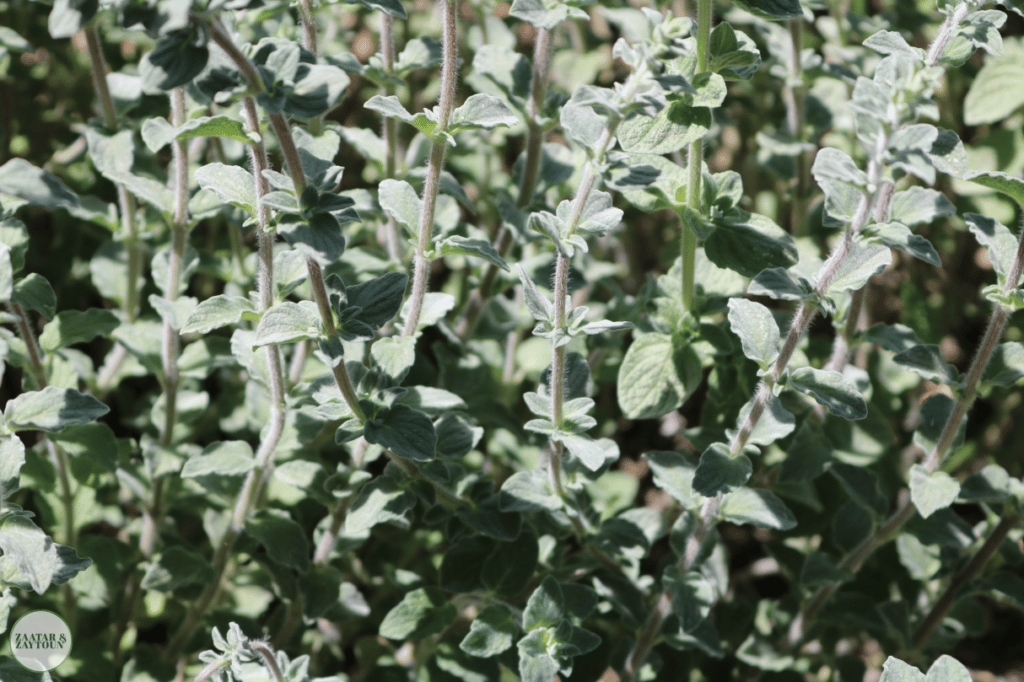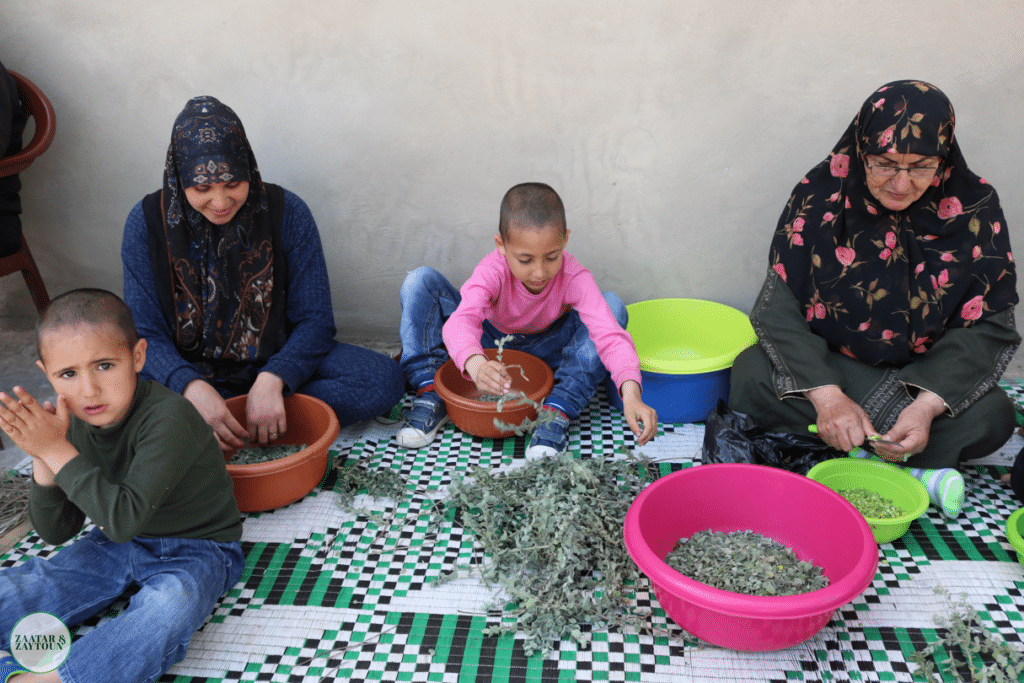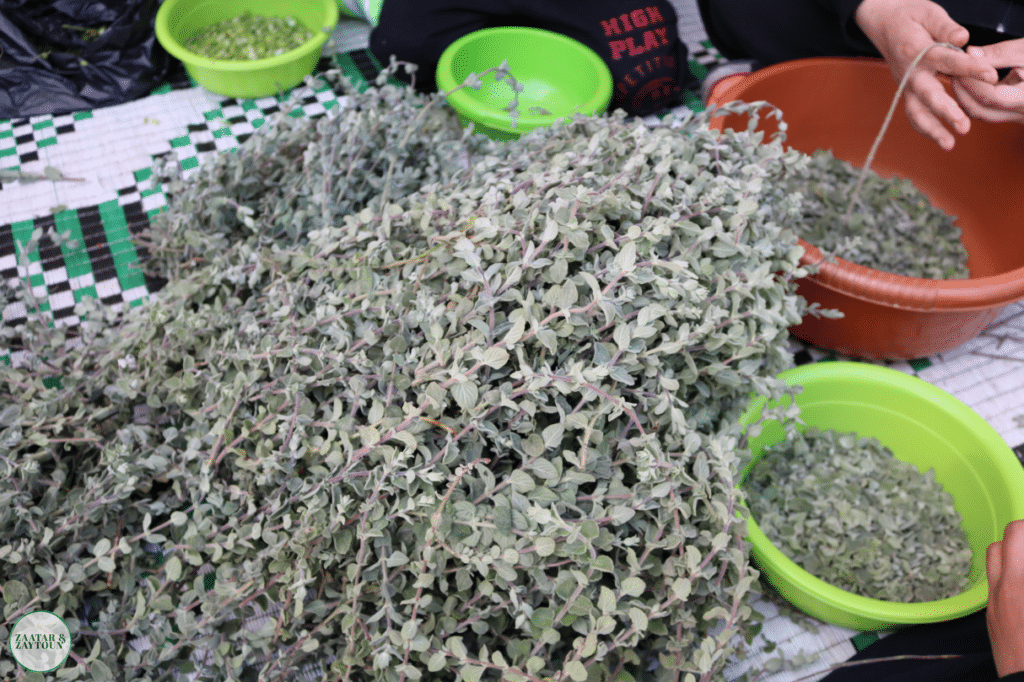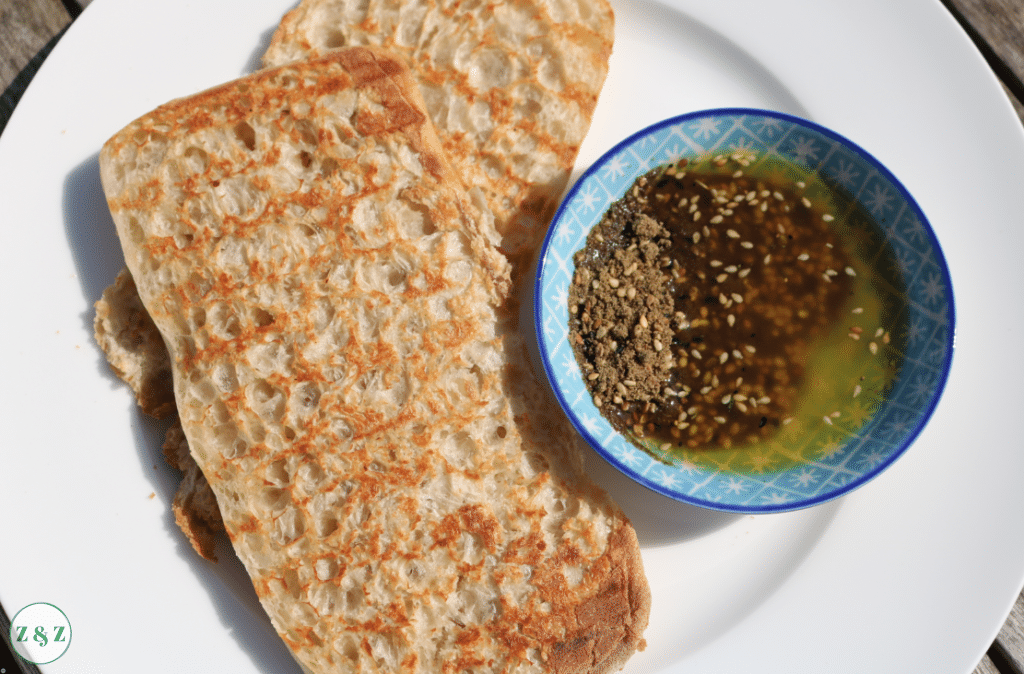Zaatar is essential to the Lebanese way of life. We have it for breakfast, we sprinkle it on our snacks, we use it in marinades and sauces, we have it again for dinner. Zaatar translates roughly to wild oregano, you don't really find it in the UK but I guess it's a cross between Thyme and Oregano. In Lebanon it grows wild in the mountains and people forage it to make their supply for the whole year. The common Zaatar mix is made with sumac and sesame seeds.

Zaatar is best harvested by hand; the leaves are strewn off and dried in the sun, before being beaten by hand, sieved and mixed with the sumac and toasted sesame seeds. Commercial zaatar made for comunal ovens is not the same as they put the leaves in a bag and bash it without hand picking each leaf. This means the dust and various randomness isn't removed at the beginning and the quality isn't the same. Below is a picture of a small collective of women from South Lebanon whom I spent the day making zaatar with. They sell the extra zaatar they make for around $30 a kilo which will last you the whole year, and is of course the best of the best.

There are several types of zaatar and their taste will vary depending on the region it grew in. Below is some Aleppo zaatar which has a distinctively earthier taste. One of my favourite ways to eat Aleppo zaatar is with some high quality olive oil and fresh bread.



